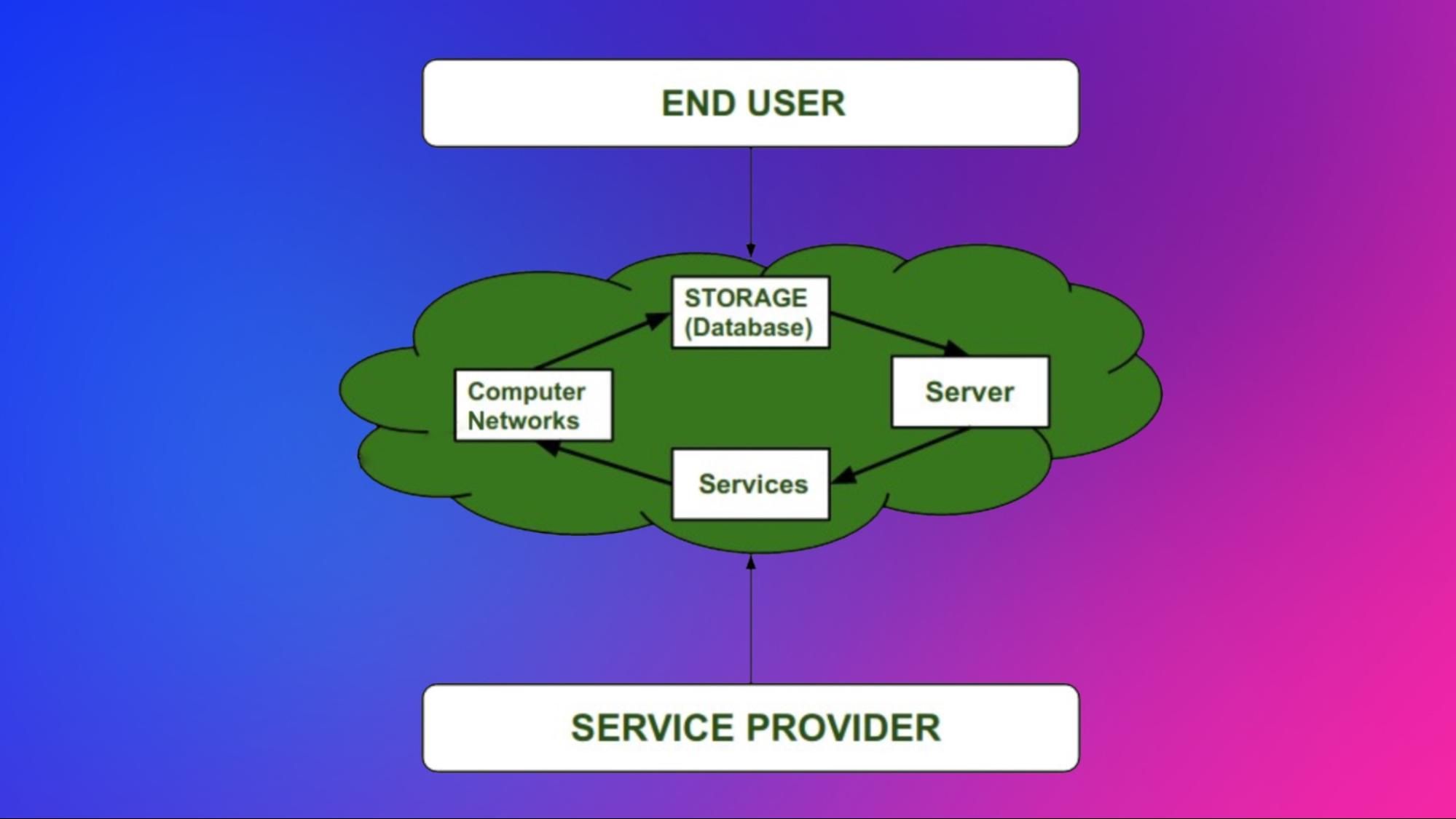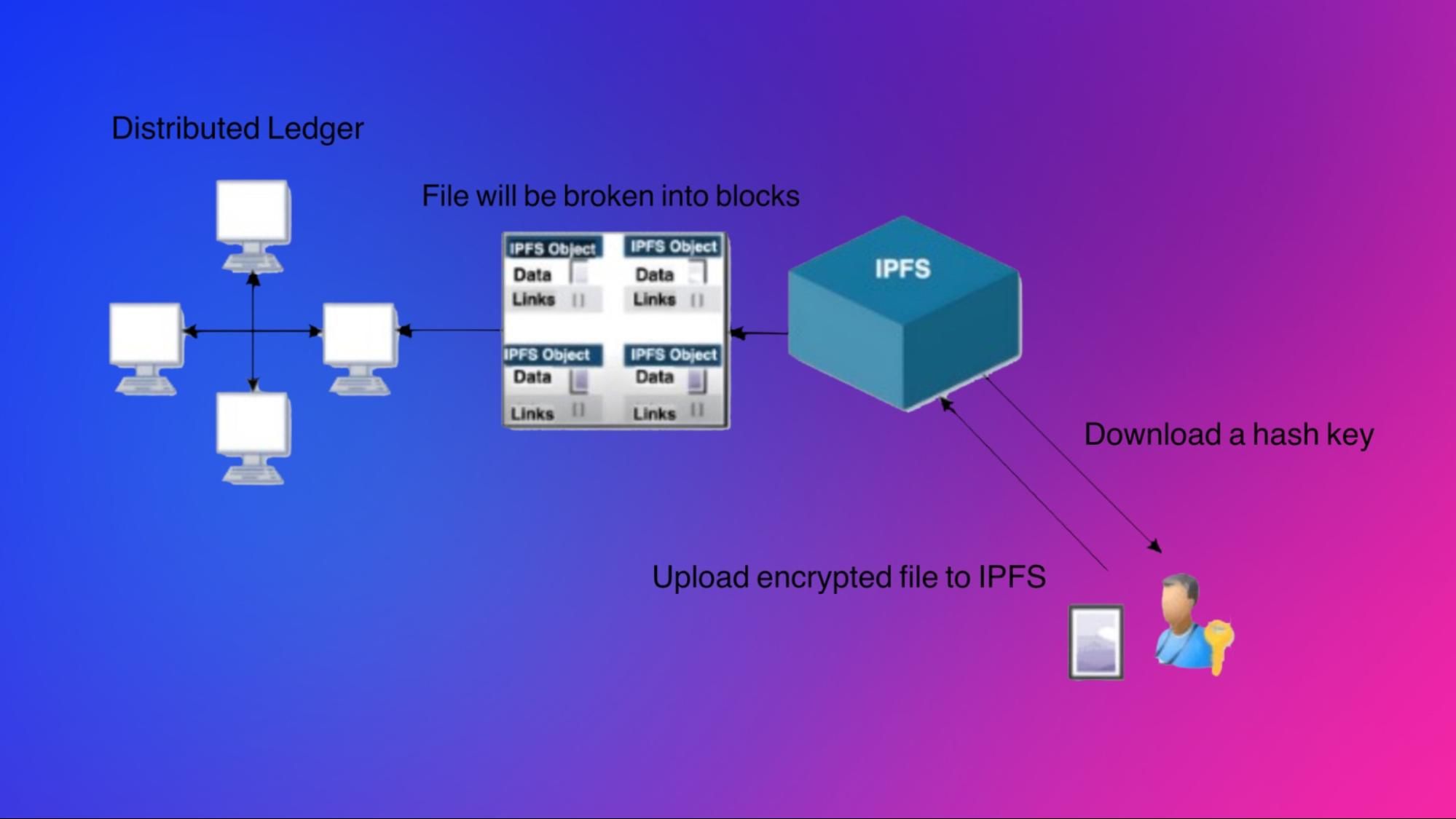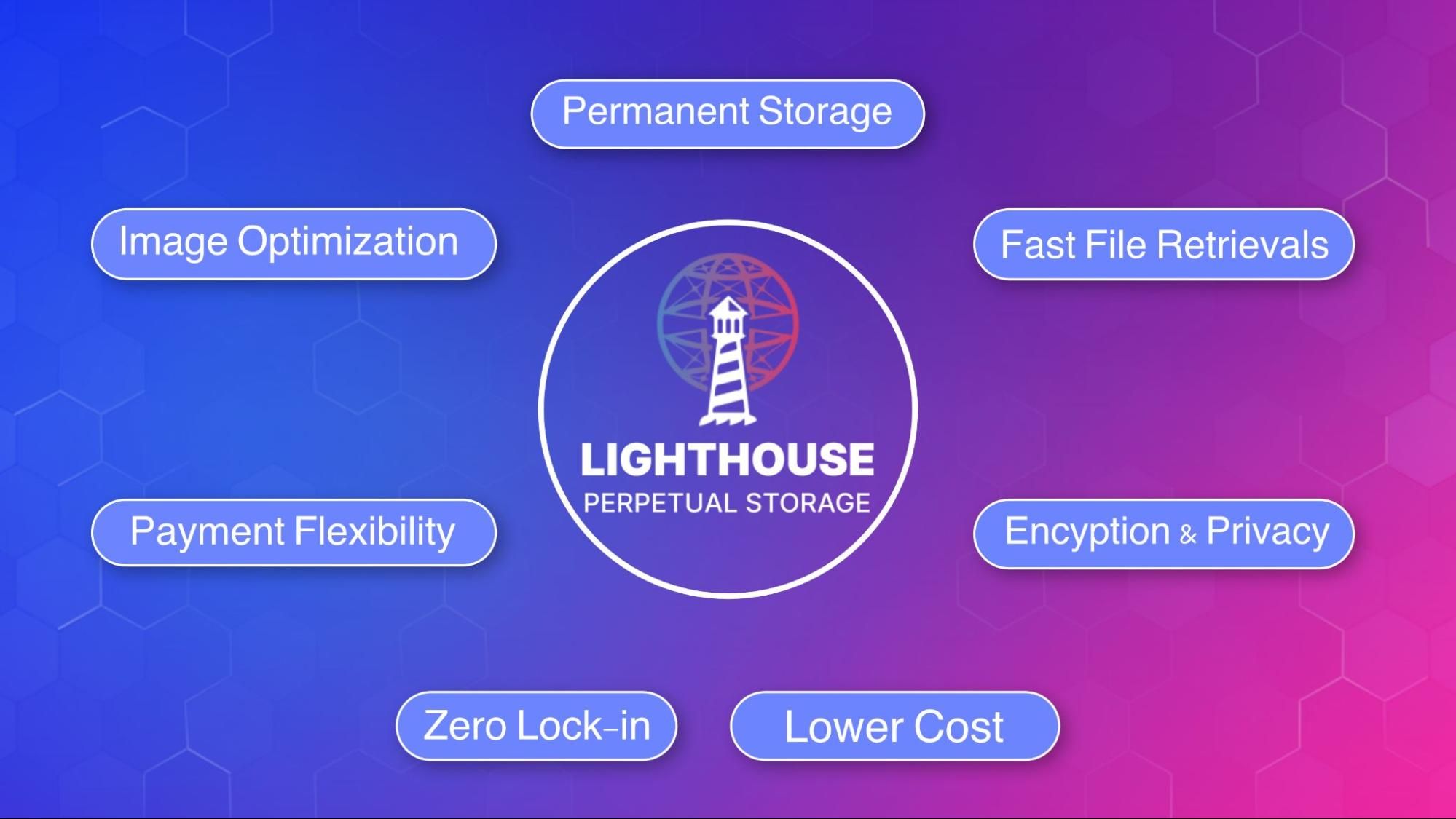Web2 Storage Challenges Versus Web3 Solutions Ft. Lighthouse
When it comes to data storage, Web2 solutions trouble users with numerous problems like cost, efficiency, and security. Here, Web3 Storage emerges as a savior by offering the best possible solutions without compromising on data privacy.
The global storage market was valued at over $185 billion in 2023, with North America contributing around $79 billion. This market size is expected to grow at a CAGR of 17.1% and is forecasted to reach a valuation of $774 billion by 2032.
According to CoinMarketCap, the market cap of top storage tokens is over $16 billion. The increase in adoption of Web3-based storage solutions will play a crucial role in transforming the traditional storage solution, which has numerous problems.
In this article, we'll explore Web2 solutions and their problems, Web3 solutions and their advantages, and the Web3 storage solutions offered by Lighthouse.
What is Web2 Storage?

The Web2 storage solutions consist of traditional cloud storage options that save files and data in an offsite location. This stored data or files can be accessed using a dedicated private network or the public internet.
Source: Geeksforgeeks.org_
A third-party cloud provider is responsible for the data transferred to the offsite location. This cloud provider manages, maintains, and secures the server and its infrastructure so that users can access their storage at any time. This storage uses remote servers to save users' data, such as documents, business data, videos, or images. To provide instant data availability to the user, cloud providers spread the available data to numerous virtual machines located in data servers in different parts of the world.
Problems in Web2 Storage
Now we'll understand the problems that the Web2 storage solutions face: Data Breaches: Web2 data storage systems are prone to various network-based attacks, as a vast quantity of data is stored in a single space or location. Hackers can gain unauthorized access, which has the potential to affect millions of users' data at once.
-
Single Point of Failure: The servers of Web2 storage create a single point of failure. A large-scale breach can instantly affect the vast amount of users' data, which can be lost forever.
-
Data Control: A few powerful Web2 entities, like Meta, Amazon, and Google, control users' data. Here, data accessibility can be misused for data monitoring and monetization without the user's permission.
-
Third-Party Dependency : In the case of Web2 storage solutions, users need to depend heavily on intermediaries for accessing and managing their stored data while accepting their terms and conditions. In addition, users are expected to trust these third parties blindly regarding the security and privacy of the stored data.
-
High Cost: Web2 storage solutions charge high costs from users for storing their files. The charges vary based on the file size or storage time, and there might be a vendor lock-in depending on the solution provider.
What is Web3 Storage?

Web3 storage, or decentralized storage, involves the storing of data on a network of computers instead of a single server. In this storage, unused spaces are utilized efficiently with the help of blockchain technology instead of relying upon vast data centers.
Source: Moonbeam.network
The workings of Web3 storage involve storing data across multiple nodes connected to P2P networks like the Interplanetary File System (IPFS) protocol. Here, the data is split into numerous pieces and sent across millions of nodes across the network.
When a user plans to retrieve their stored data, the network collects all the distributed pieces together. Finally, the user gets back their original data, which is available to access or download.
What Problems Does Web3 Storage Solve?
Web3 storage solutions help to solve the problems faced by Web2 storage solutions, such as:
-
Improved Security: The data are stored across different nodes using high-end encryption to protect the user's data. The blockchain's immutability feature helps avoid potential attacks that existed with Web2 storage solutions.
-
Enhanced Privacy: You also needn't worry about the privacy of your files with sensitive information. Unlike Web2 storage, your file will be fragmented into numerous parts before sharing it with multiple nodes, ensuring maximum privacy.
-
Low Cost: The availability of numerous nodes that host the data increases the availability of storage space. For this reason, the cost required to pay for the space is lower compared to that of Web2 storage.
-
Faster Download: Web2 storage solutions can face network issues when the traffic is higher than the network's capacity. Web3 storage, on the other hand, has the potential to reduce bandwidth usage as the nodes that store data are distributed globally.
-
Data Ownership: In Web3 storage solutions, users have complete ownership and control of their data, allowing them to access their files at any time. This feature helps shift data ownership from a centralized entity to individual users.
-
Enhanced Accessibility: The Web3 storage solution removes the need for intermediaries between the user and the storage space. This access barrier is removed, allowing users with an internet connection to participate in the benefits of decentralized storage networks.
It's important to know about Filecoin, the frontier of Web3 data storage, to better understand the use case of Web3 storage.
What is Interplanetary File System (IPFS)?

Interplanetary File System (IPFS) is a decentralized file storage protocol that allows users to store and share files within a peer-to-peer network. It was developed to address the limitations of server-based systems that rely on a centralized entity.
Source: Researchgate.net
When a user stores data on the IPFS network, it's broken into multiple pieces that can support a maximum payload of 256 KB. Then, each piece of data is cryptographically hashed with a unique content identifier (CID). The data splitting method allows IPFS to store large files without overloading the network. Moreover, the data on IPFS networks are resistant to censorship and tampering.
What is Filecoin?

Filecoin is a P2P network that allows users to store files in a decentralized manner using cryptography to safeguard their data. Protocol Labs introduced this blockchain project in 2017 to provide an efficient alternative to Web2 storage solutions. The launch of Filecoin facilitated the efficient use of storage resources, offering users high transparency and security. Filecoin utilizes unused data storage worldwide to offer users cheaper pricing. Filecoin works on top of a decentralized web protocol called the Interplanetary File System (IPFS). This protocol identifies data based on the content type rather than its location to improve transparency, accessibility, and security.
Source: Researchgate.net
The Filecoin ICO was conducted in 2017, successfully raising over $257 million, the largest ICO figure at that time. At the time of writing, Filecoin (FIL), the native cryptocurrency of Filecoin, is valued at over $3 billion. We'll now explore the contribution of Lighthouse in the Web3 storage ecosystem.
What is Lighthouse?

Lighthouse is a permanent file storage facilitator built on Filecoin and IPFS that allows users to permanently store files by paying once. Unlike traditional Web2 storage, users don't need to track time spent storing their data.
This permanent ownership-based file storage will help store users' valuable data, including NFT metadata. Lighthouse also supports the deployment of smart contracts on Filecoin Virtual Machine (FVM), Solana, Polygon, and more. Lighthouse's perpetual protocol operates along with a smart contract-powered endowment pool to pay storage providers. When someone pays to store a file, a portion of that fund is distributed to the Filecoin network's storage providers, and the remaining fund is distributed to the endowment pool.
Features of Lighthouse
The major features of Lighthouse include:
-
Permanent Storage: Lighthouse allows users to pay once and own the storage space indefinitely. This feature eliminates the pain of subscription model payment options available with the traditional Web2 storage solutions.
-
Image Optimization: Users have the flexibility to fix the height and width of their stored images while retrieving them from the IPFS. This image optimization option helps users save bandwidth, allowing more storage choices.
-
Payment Flexibility: Lighthouse allows users to pay with any tokens from popular blockchain networks like Ethereum, Solana, Optimism, and Polygon, to name a few. This multi-chain support allows users to integrate with supported dApps.
-
Zero Lock-in: Users don't need to face difficulties associated with any constraints associated with specific storage providers. For this reason, you can always access and manage your data 24/7.
-
Lower Cost: Lighthouse offers low-cost storage solutions by leveraging the open market of Filecoin miners who earn block rewards from its network.
-
Encryption and Privacy: The user's data are secured efficiently using encryption technology. Moreover, files are stored in fragments to protect the privacy of their file's content.
-
Fast File Retrievals: The availability of Lighthouse's custom IPFS gateway helps you retrieve your files faster. This feature is applicable to low and high-size files like high-resolution video files.
Conclusion
There is a growing demand for data storage that needs to be addressed properly. The traditional Web2 storage provider fails to offer its users cost-efficient, secure, and privacy-ensured solutions.
The development of Web3 storage solutions emerges to solve the issues faced by Web2 storage. Lighthouse utilizes the potential of IPFS and Filecoin to deliver permanent storage spaces for users for lower fees.
Read our latest blog
Shivang Kamboj
Lighthouse Monthly Update – October 2025
Nandit Mehra
Lighthouse Monthly Update – August 2025
Nandit Mehra
Lighthouse July 2025 Update – Real Infra, Real Recognition, Real Builders
Nandit Mehra
Lighthouse Monthly Update – June 2025 🚀
Parv
Getting Started with Threshold Cryptography
Parv
Permanent Storage Powered by Lighthouse
Parv
What is IPFS Pinning & A Complete Guide with Lighthouse
Nandit Mehra
Lighthouse Monthly Update – May 2025
Nandit Mehra
Lighthouse Monthly Update – April 2025
Nandit Mehra
Lighthouse Monthly Update – February 2025
Nandit Mehra
Lighthouse Monthly Update – January 2025
Nandit Mehra
The Role of Blockchain in AI & Data Storage: A Decentralized Future for Technology
Nandit Mehra
November at Lighthouse: Milestones & Innovations
Nandit Mehra
October at Lighthouse: Milestones & Innovations
Nandit Mehra
September at Lighthouse: Milestones & Innovations
Nandit Mehra
August at Lighthouse: Milestones & Innovations
Nandit Mehra
AI Meets Blockchain: Beyond the Hype & Into the Future
Nandit Mehra
What is FHE and how Lighthouse plans to use it
Nandit Mehra
Discover How the Endowment Pool Makes Your Data Immortal
BananaCircle
Web2 Storage Challenges Versus Web3 Solutions Ft. Lighthouse
Ishika Rathi
On-Chain Encryption: Security Unveiled
Ishika Rathi
NFT Storage Strategies
Ishika Rathi
Exploring Web3 Advancements in Storage Solutions
Ishika Rathi
Eternalizing Data: A Permanent storage
Ishika Rathi
Revolutionizing Permanence in Data Storage
Ishika Rathi
Decentralized Excellence: Elevating Data Storage with Lighthouse
Ishika Rathi
Navigating Permanent Storage: Harnessing the Power of Filecoin and IPFS
Ishika Rathi
Unveiling the Mechanics of Perpetual Storage
Ishika Rathi
Decentralized Storage: A Smarter, Safer, and Cheaper Way to Manage Your Data
Ishika Rathi
Lighthouse: Secure Web3 Storage for Your AI Data
Ishika Rathi
Understanding How web3 storage Operates
Ishika Rathi
Web3 Storage: IPFS and Filecoin Guide
Aryaman Raj
Passkey Demo App with WebAuthn and Ethereum
Aryaman Raj
Secure File Sharing using Lighthouse SDK: A Step-by-Step Guide
Aryaman Raj, Nandit Mehra
Time Lock Encryption using Lighthouse Access Control
Aryaman Raj
A Comprehensive Guide to Publishing and Updating Content with Lighthouse IPNS
Aryaman Raj
Getting Started with Lighthouse Python SDK
Ravish Sharma
Creating a Pay-to-View Model Using Lighthouse Storage
Nandit Mehra
Decentralized storage for the Ocean Protocol
Lighthouse
How To Migrate Your Files To Lighthouse
Nandit Mehra
Encryption and Access Control for Web3 using Lighthouse